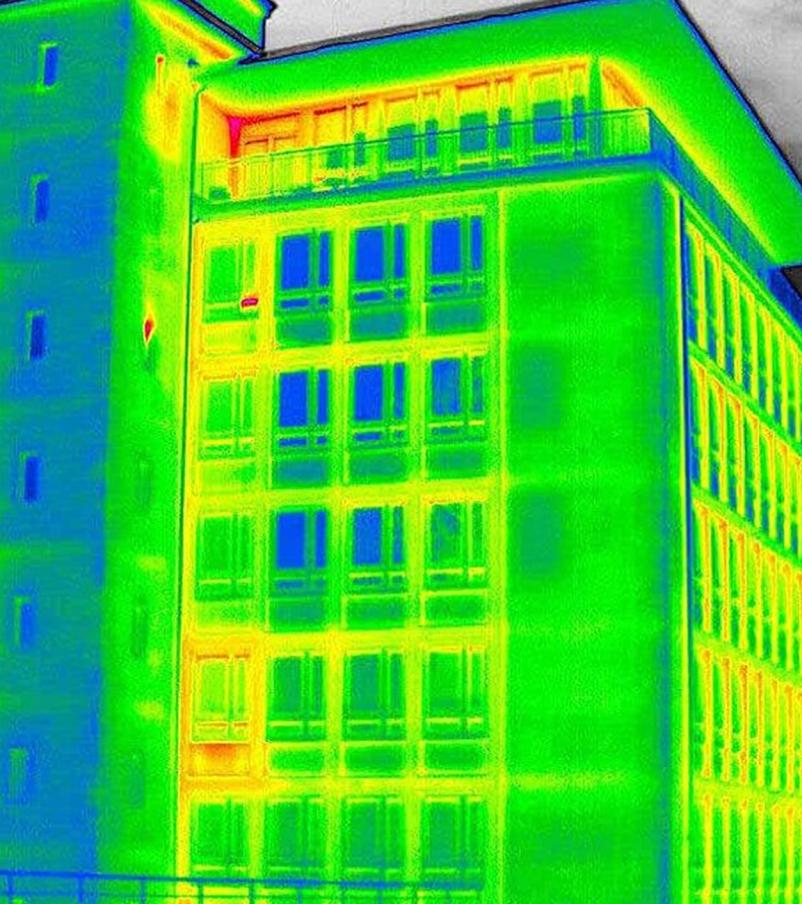-
Over a third (38.1%) of non-domestic buildings have a current C rating
-
90.1% decrease in the lowest G rating over the last decade, showing huge improvement
-
However, first increase since 2011 in lowest G ratings, with 194 (21%) more in the 2020-2021 period
-
14.4% increase in A or A* rated buildings in England in first half of 2022, when compared to the same period as last year
-
Leading steel manufacturer offers advice on improving thermal energy efficiency in buildings

Leading steel building products manufacturer Tata Steel - Building Systems UK, is highlighting the improvement of non-domestic and commercial buildings around Britain for their thermal energy efficiency, as it reveals the latest figures.
Tata Steel - Building Systems UK, has obtained and analysed 12 years of historical data [1] from the Energy Performance Certificates for Buildings Register for England and Wales. It can today reveal the huge progress made in the construction and efficiency of non-domestic buildings across the nation.
The study has revealed that there has been a significant improvement in the Trisobuild overall scores of the one million non-domestic buildings recorded in the last decade. In 2012, there were 11,344 buildings of this nature in England and Wales achieving the lowest G rating for their energy performance.
Fast forward a decade later, and there are just 1,119 non-domestic buildings with a low G rating; a significant 90.1% decrease and a huge milestone for the industry with its approach to energyl efficiencies.
However, Jonathan Arnold, Development Manager Technical Services at Building Systems UK - Tata Steel, warns there is still a way to go: “Energy Performance Certificates are a hugely important indicator of how UK buildings are faring in thermal energy efficiency targets.
The latest figures for 2022 already show a 14.4% increase in A or A* rated non-domestic buildings, compared to the same January - June period last year. This indicates many commercial buildings are making conscious decisions on materials and constructing to meet these highest standards in new builds, or are improving existing structural thermal energy efficiency.
“In part, this can be attributed to, and driven by, the guidance on efficiency standards for non-domestic buildings. In 2018, the ‘Minimum Level of Energy Efficiency’ standard was set to EPC band E. But The target EPC rating increases to grade C by 2027 and grade B by 2030, so for landlords or owners of non-domestic properties, the thermal energy efficiency of the premises is only going to increasingly become an important factor.
“The data indicates that there is still a way to go still in terms of improvement across the board, as the latest annual figures show that the lowest G ratings have seen their first slight increase again since 2011. Having steadily and impressively declined year-on-year for a decade - with a greater shift in the higher ratings too - we have noted a 21% increase in the buildings across England and Wales receiving a G rating. That’s 194 more buildings achieving this poorer score in 2021 than 2020, and bucking the steadily improving decrease.”
2022 thermal efficiency scores
Energy Performance Certificates are important for buildings - of any purpose - to measure efficiency and ensure they are meeting current standards and regulations. For non-domestic buildings in the study, here is how they fare with the latest data from the last 12 months:
What does this mean for the building and construction industries, and what can be improved?
Jonathan Arnold, Development Manager Technical Services at Tata Steel says: “Despite a bigger number of A and A* ratings, and more of these than ever before, a concurrent increase in the lower end of the G ratings sabotages any progress. This divide is a step backwards for the progress made and developers need to address their building designs, or risk falling behind industry standards.
“The most cost-effective, sustainable and efficient way to boost thermal performance is to engage the concept from the building design and product selection stage. Small steps such as choosing a complete building envelope system, and not picking products in isolation will aid these higher A and A* ratings as the products work better together. Roofing and cladding, as well as floor and roof deck systems for example need to all be as equally energy efficient for a building design as they are functional to the purpose. If better decisions are made to select building systems that boost thermal performance from the start of the construction process, it avoids improvement works down the line.
“This doesn’t just apply to new buildings meeting standards. For buildings undergoing refurbishments, upgrades are imperative too in supporting current efficiency targets of grade B by 2030. Again, seeking a comprehensive system, rather than products in isolation, can aid this process.
“We purposely offer and have developed a wide range of building envelope and structural products that provide an easily accessible solution with a single UK source, to enable thermal performance to be a conscious early decision.
“As a manufacturer, we want to see efficiency improvement wherever possible with more buildings exceeding standards and achieving A / A* ratings at the point of construction. A and A* ratings currently account for 2.96% of overall ratings in non-domestic buildings in the last 12 months, and we would expect and hope this to be nearer to the 5% ballpark for 2023.”
For further information contact technical.envelopeproducts@tatasteeleurope.com
More information:


































































































































































































































